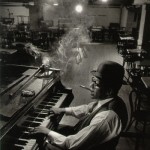 Two notes, which I hope to braid into a discussion of the great stride pianist Willie “The Lion” Smith.
Two notes, which I hope to braid into a discussion of the great stride pianist Willie “The Lion” Smith.
First—in case it isn’t obvious from previous posts—I’m kind of a piano snob. In jazz, many of the bebop giants—Bobby Timmons, Kenny Drew, Cedar Walton, even Wynton Kelly and Tommy Flanagan at times—leave me cold. Heresy, but I can’t connect with solo Monk either, though there’s hardly a pianist I prefer in a group context, whether comping or soloing. Latin pianists mostly makes me cringe—all that flamboyant pounding—this though I get the virtuosity of Latin jazzers like Chucho Valdez and Michel Camilo. And the less said about rock keyboards, the better. I try not to make a habit of shooting fish in barrels, and anyway, it might just be the metal in me talking.
With jazz, I gravitate toward pianists in whose playing I can recognize something of the classical tradition. In terms of technique, this pretty much boils down to a more active left hand, a more precise articulation with the right, a greater facility with the pedal, and a greater feel for the piano’s dynamic potential, all of which serve to expand the range of the instrument’s expressive possibilities. That a pianist has to be able do that and swing, too, is sort of a given. And yet—to borrow the old logical formula—swing is necessary, but (heresy again!) not sufficient. That is: It don’t mean a thing if it ain’t got that swing, but swing ain’t everything. Bud Powell, Bill Evans, Brad Meldhau, Stephen Scott, and Joey Calderazzo are a few of the names that pop into my head.
If the names above are weighted toward contemporary players, that may be because jazz pianists today are more likely to have had conservatory training, and a fair number of my favorite young pianists seem to be refugees from classical music programs. This is suggested in part by the number of wonderful young Asian women who have fled a future in the recital hall for the bandstand. Some of them gig regularly around New York: Helen Sung, Eri Yamamoto. (Is it only in America that we think of classically-trained jazz musicians as refugees? And if so, why?) By the way, for the rest of this post, every time you think, “But what about Monk?” just imagine me saying, “Monk excepted.” I’ll get back to him at some length in a later post.
Now, there was a period a while back when I was borrowing a lot of discs from the public library and copying them onto my computer. To avoid racking up fines, I tended to copy them without listening to them, and would not get around to hearing them until turning over the music on my little 4-gig iPod about every four to five months.
This is why the first time my snobbish pianistic ears heard Willie “The Lion” Smith, I was walking across the 149th Street bridge on my way to work. I stopped walking—or I must have stopped walking. At least, I performed the mental equivalent of stopping walking, whether I actually stopped or not. But enough of the Beckett pastiche. My first thought was: I pushed the wrong button. This isn’t … jazz. What was this gorgeous little slice of American modernism I had stumbled upon? Had I inadvertently put on Samuel Barber’s “Souvenirs”? Edward MacDowell’s “Woodland Sketches,” or some other spliff of homegrown Debussy? No: the screen said I was listening to Willie “The Lion” Smith: 1938-1940. I actually had a moment’s crisis of faith in my iPod. Maybe it was broken, or possessed, displaying one title while playing another, laughing …
And then all at once I became reconciled to my ignorance, and realized that it was time to start listening to stride.
Because (as I quickly realized) it wasn’t just Smith. It was the great undiscovered country of pre-bop piano: Fats Waller and Jelly-Roll Morton and James P. Johnson and Earl Hines, and those geniuses we tend to associate only with big-band music, Mary Lou Williams and Duke Ellington. God, Ellington; I imagine a globe with his name ranged across a blank continent the size of Eurasia: E L L I N G T O N. I actually have to turn the globe slightly to see the whole word, or project it onto a flat space … which, as we all know, causes distortions.
So I went back to the library and borrowed a couple of discs by Waller and a couple by Morton. But neither impressed me quite like Smith. Granted, with all three I’m making judgments based on an extremely limited sample. I’ve since come to understand that the 1938-40 Smith recordings actually encompass what critics consider to be his finest work. As for Morton, the discs covered recordings made between 1923 and 1926—my original, unrealized intention had been to go forward from there—and mixed solo piano with “Dixieland” band; the Waller recordings, though apparently made when he was at his peak (1927-9), were all with his band, or “Buddies.” It may be the case that Smith struck me the way he did simply because I heard him first, or that the 1938-40 recordings reflect refinements of the previous decade. Regardless, I should probably save the comparisons for some future revision and instead just try to close-read what it was that struck me about Smith.
Listening to Smith, my first thought was that he was doing with the parlor music of his day what Debussy and Ravel had done with theirs: playing it at an angle, as García Márquez once described magic realism’s relationship to conventional realism. Familiar melodic structures, rhythms, and harmonic changes are tweaked, flipped, toyed with, decomposed. The tunes remain, like leaves frozen in ice; but what we’re really listening to is the pianist skating over the top of them, his dazzling pirouettes and measured stumbles. Conversely, compared to many later bebop players, Smith sounds harmonically more advanced; and this makes me wonder whether the stride pianists serve a similar role to contemporary jazz musicians that baroque did to some modern classical composers: someone bothered to climb over the mountain (of bebop on the one hand, the nineteenth century on the other) and discovered a wealth of musical ideas that had been abandoned during intervening evolution. That said, I don’t mean to suggest that Smith and Debussy belong to separate kingdoms. Quite the opposite: ragtime players influenced the French (and other) moderns, while some of Smith’s pieces sound like syncopated Chopin.
Baroque notwithstanding, one of the main things that attracted me to Smith (and stride more generally) was the prevalence of the left hand. It’s something I miss in a lot of bebop. Even a post-bopper like McCoy Tyner, so often cited for his left hand, uses it more as an anchor than as an independent voice. It’s an anchor in stride too, of course, but it carries much more expressive weight; it vies for our attention with the right, and we are more likely to conciliate it. As a result, stride has a much more polyphonic texture than bebop. There is often a marvelous independence of one hand from the other: the left can oompah or boogie-woogie away while the right remains free to ornament the melody … or perhaps lose the melody in whole or in part to its competitor, bounding back and forth at the other end of the keyboard with its dukes up, always poised to take a swing (“Sneakaway Willie”). I can’t think of another pianist who can play three against two so effortlessly as Smith does on “Echoes of Spring,” his right hand waltzing while the left twiddles, each as carefree as the other. Think of a horse cantering while its rider upper-body-dances with an invisible partner. The left hand can suddenly take on a life of its own, too, break stride, and descend the piano in syncopated octaves, sometimes twice or three times in just a few measures, the righthand chords tumbling after, before we’re comfortably back in the rag again (“Rippling Waters,” “Between The Devil and the Deep Blue Sea”). Or it can follow a call-and-response between the two hands by climbing up to meet the right, or hang the melody on high chords (“Morning Air”). Or it can darkly busy itself beneath the melodic surface with Beethovenian foreboding.
As for those right-hand flourishes, they are lovely, seemingly inexhaustible, and give the impression of having been discovered at the moment(s) of their execution. The trills-with-tails, for example, on “Squeeze Me” and “Echoes of Spring” (3-4-3-1 in the minor pentatonic scale, and variations on that theme) with which he seeds the whole upper range of the keyboard, his left keeping time like a planter walking a row, body swaying like the pendulum in a grandfather clock. And then those tinkling 6-3 trills on “Squeeze Me”; the unobtrusive ornamenting of de rigeur chromatic descents; the myriad scoops (at least, that’s what jazz guitarists call them), like minor banana-peel slips; and the limpid split octaves on “Echoes,” so reminiscent of Chopin (although the most Chopinesque touches about this piece are the chromaticism in the melody and the modulation in the left hand).
I have a recurring image of Smith waiting at a bus stop. He paces, looking now and again up the road. He hums a tune, lights his cigar. And then he’ll do something amazing—if you wait around long enough he’ll have to. Not self-consciously; he’s trying to keep himself entertained. A glassy chord. A weird little dissonance. An oddball ending, like “Sneakaway Willie”’s skitter up to the top of the keyboard (the song ends not because it resolves harmonically, but because he runs out of keys). The saltpeter little unswung righthand figure in “Doggin’ the Dog,” just before that dark ladder of fourths that calls Big Joe Turner back in: “And I ain’t gonna be a low-down dog no more …” (Turner sings on the last two tracks of the disc.) Smith does that little figure twice, and then just as quickly abandons it, seemingly bored with it, a kid throwing jacks, moves on to something else. And rest assured he’ll find something else, too, the left hand measuring, whiling time away, always ready to spring.
The mistitled “Rippling Waters” is maybe the standout piece on the disc, the other side of the coin to “Echoes”’s serenity. Maybe I feel it’s mistitled because Marcus Roberts’ song of the same name sounds like … well, like rippling waters. It’s a tune deeply infused with a gospel feel, even as it is ornamented like a romantic piano fantasy. But Smith’s waters do anything but ripple, they splash and bounce and whirl; trills and chords circle treacherously around each other; resolutions jar, opening the way to the hardest-stomping of bridges, or to a sudden end. So much, it seems, for MacDowell-style impressionism. There is not a busier, more uptempo tune on the disc, or one that better showcases the pianist at his most exciting.
*
I scanned around a bit in my jazz books and on line to see if anyone had made a case for Smith’s classical inflections or relationship to American modernism. Indeed, Smith’s interest in classical music is widely acknowledged, with “Echoes of Spring” the most cited. And critic Martin Williams called Smith the most musically interesting of the Harlem school (although he prefers New Orleans’s Morton), and compares him to MacDowell. That said, there is remarkably little written about Smith, at least compared to Waller and Morton.
Now, Gary Giddins’ curt dismissal of Smith (in his piece on Fats Waller, in Visions of Jazz) is worth discussing. Smith is used briefly as a foil for Waller, whom Giddins seems to consider the greater artist; Smith, Giddins claims, had a tendency toward sentimentality. Reading through many of the densely brilliant little monographs and duo-graphs toward the beginning of Visions of Jazz, one can’t help but come to see sentimentality as the arch-villain of the grand narrative of early jazz; it’s a kind of smothering mother-figure (for mother-love and mother-lovers also take a whuppin’ here) out of which the music struggled toward maturity, mentored by figures like Armstrong, Oliver, and Ellington. You can almost hear Giddins crying out, “Clowning, minstrelsy, grotesque parody … anything but sentimentality!” Notably, when classical music is mentioned with respect to, say, Waller, it seems that jazz can only approach it via parody or pastiche. To do otherwise, perhaps, is to risk sentiment—or to become, as Miles Davis so memorably put it (according to the liner notes to Sketches of Spain), “a hip cornball.”
I’ve watched loads of silent movies over the past year, slaking myself on MOMA’s ongoing “Auteurist History of Film” series, and now on the “Weimar Cinema” series as well. Some of the greatest of them seem pretty sentimental to me, at least from a century’s distance. And yet, what power many of them still have! I suppose I’ll be told that, well, then, it’s not sentimental … that, or I’m a maudlin fool. I guess I find sentimentality difficult to gauge when watching films or listening to music so far removed from my own time. A zoologist can probably tell me to a reasonable degree of certainty whether I’m looking at the finger-bone of an ape or a rat’s femur. But how can a cultural historian claim with a similar degree of certainty that a movie or a song is or is not sentimental? Reception studies? Sentimental, that is, for whom? I can’t imagine being moved by a silent film—or, for that matter, by a Romantic symphony, or an Elizabethan play—without some imaginative effort to see beyond my contemporary prejudices and expectations, and to inhabit the conventions of another age. And then the longer I live, the more I start to feel like there are worse things than a little sentimentality. At least in literature, I’ve found more sustenance in writers who are willing to risk sentiment than in those who make careers out of studiously avoiding it.
I’ll stop here, but not before giving a shout-out to Lewis Nash, who played a disc of the Lester Young trio (feat. Nat Cole and Buddy Rich) for a small crowd gathered at the Jazz Museum of Harlem some months back, and suggested that listeners and musicians alike had much to gain by digging into pre-bop jazz. He’s hardly the first to have suggested it … but then the others didn’t have “Prez” standing behind them, helping them make their case.
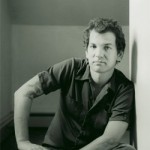 As part of his tenure as the Richard and Barbara Debs Composer—the first jazz musician to hold this chair—Brad Mehldau presented three concerts between January and March at Carnegie’s Zankel Hall. The first was a solo recital pairing original works with pieces of music that had inspired them (by Bach, Brahms, and Fauré), the pairs interspersed with brief lectures relating the two. In the third concert (I skipped the second), Mehldau shared the stage at different times with two other pianist-composers, Kevin Hays and Timothy Andres, and mixed his own compositions with those of his stagemates, together with a few standards. This show closed with two dances from a suite-in-progress, Rock ‘n’ Roll Dances, which featured Mehldau and Andres on piano, a 6-piece reed section, and a vocalist, Becca Stevens.
As part of his tenure as the Richard and Barbara Debs Composer—the first jazz musician to hold this chair—Brad Mehldau presented three concerts between January and March at Carnegie’s Zankel Hall. The first was a solo recital pairing original works with pieces of music that had inspired them (by Bach, Brahms, and Fauré), the pairs interspersed with brief lectures relating the two. In the third concert (I skipped the second), Mehldau shared the stage at different times with two other pianist-composers, Kevin Hays and Timothy Andres, and mixed his own compositions with those of his stagemates, together with a few standards. This show closed with two dances from a suite-in-progress, Rock ‘n’ Roll Dances, which featured Mehldau and Andres on piano, a 6-piece reed section, and a vocalist, Becca Stevens.
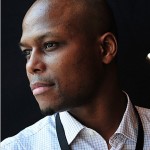
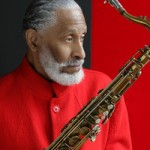

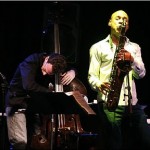

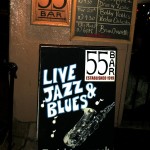
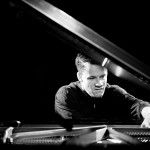
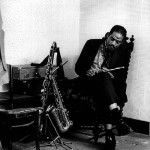
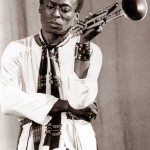 A few Fridays ago I was listening to Out to Lunch, WKCR’s weekday afternoon jazz program, as I try to do whenever I have the opportunity. Because Friday is the day I’m least likely to be listening, and because the DJs rotate from one day to the next, and some only work every other week, the voice on this Friday was unfamiliar to me. It was a female voice, a British voice; apparently, it was the voice that DJ’s every other Friday. I was at home, convalescing, or hoping I was convalescing, the process can be so slow, the body so unreliable. And this voice, it seemed better suited to a classical music program than to jazz … but of course it’s ridiculous to associate British accents with classical music, just as it would be to associate New York ones with jazz. The whole ethos of KCR would crucify me for such a prejudice—if, that is, one could be crucified by an ethos, and if it weren’t too ironic to be crucified for a prejudice.
A few Fridays ago I was listening to Out to Lunch, WKCR’s weekday afternoon jazz program, as I try to do whenever I have the opportunity. Because Friday is the day I’m least likely to be listening, and because the DJs rotate from one day to the next, and some only work every other week, the voice on this Friday was unfamiliar to me. It was a female voice, a British voice; apparently, it was the voice that DJ’s every other Friday. I was at home, convalescing, or hoping I was convalescing, the process can be so slow, the body so unreliable. And this voice, it seemed better suited to a classical music program than to jazz … but of course it’s ridiculous to associate British accents with classical music, just as it would be to associate New York ones with jazz. The whole ethos of KCR would crucify me for such a prejudice—if, that is, one could be crucified by an ethos, and if it weren’t too ironic to be crucified for a prejudice.
